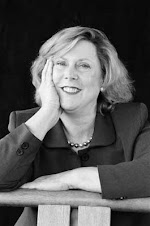Online or In Person,
2016 is the Year
to Improve Your Wine-Industry Spanish
to Improve Your Wine-Industry Spanish
Napa, CA -- “Primero moleremos las uvas para vino
blanco.” Effective
communications with your Spanish-speaking workers in the vineyard and winery is
the goal of a new series of Spanish For The Wine Industry classes that begin
online and on-site in Northern California in January 2016. Taught by Josefina K
Adriance in Napa, the classes are also now available online via VESTA, the
Viniculture Enology Science and Technology Alliance program created by Missouri
State University for the grape and wine industry in the USA. Detailed information on both online and
on-site classes is available at www.SpanishForWine.com.
The
VESTA online classes offer students the convenience of learning at home or in
the office rather than a classroom. Over
the course of 15 weeks, self-paced weekly video lectures are supplemented with
a live online class. This VESTA course,
VIN108, can also count as college credit toward a variety of VESTA technical
certificates, two year Associate degrees, and Bachelors and Masters
programs.
Classroom
instruction offered in Napa features four-students-only evening classes of 90
minutes that meet once a week for 10 weeks.
Small class size assures rapid and individualized learning. There are two levels of classes available: a
beginning class, Spanish for the Wine Industry 1, and an intermediate level
class, Spanish for the Wine Industry 2. The
goal is to gain confidence with language skills need to work effectively with
Spanish-speaking employees in the vineyard and winery.
Adriance
also offers classes on-site at wineries. Over the course of 10 weeks, up to ten
students meet on winery premises for instruction for two hours weekly.
In
her classes, Adriance covers basic grammar, as well as vocabulary pertinent to
topics including soil preparation, irrigation, planting, pruning, canopy
management, disease and pest control, harvesting, crushing and pressing the
fruit, winery sanitation, filling out paperwork, safety, and awareness of
cultural differences.
"In
a profession such as winemaking there are a multitude of technical terms,"
said Peter Luthi, a Napa Valley winemaker who has taken Adriance's classes.
"Finding the proper
translation is not easy. Adriance's Spanish classes, books and dictionary
specifically developed for the wine industry, provide an invaluable resource
for anybody involved in viticulture or enology where Spanish is used."
For
more information, contact Adriance at Info@SpanishForWine.com or visit the website www.SpanishForWine.com
##
Nov 2015
##
About
Josefina K Adriance:
A
native of Madrid, Adriance earned her Bachelor’s and Master’s degrees in
Spanish. For almost 30 years, she has taught Spanish for the Wine Industry; her
clients include some of the most prestigious wineries and vineyards in
California. She provides customized
classes as well as interpretation and translation services. Adriance is the author of several books and
manuals: Spanish for the Wine Industry,
English for the Wine Industry, the English-Spanish Dictionary for the Wine
Industry, and Spanish for the Hospitality Industry.
























 Your lover wants chocolate, you want wine. Can this relationship be saved in time for Valentine’s Day?
Your lover wants chocolate, you want wine. Can this relationship be saved in time for Valentine’s Day?


